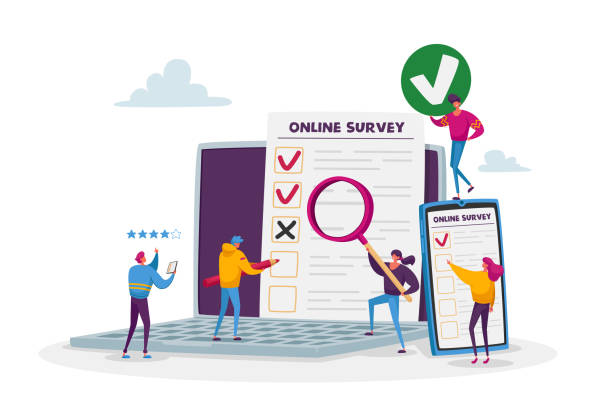Unlocking the full potential of surveys

Introduction
Surveys, a word that many might associate with mundane questionnaires or feedback forms. However, beneath this seemingly mundane tool lies the power to transform businesses, impact decisions, and bring about substantial change. Read on to learn more about Surveys, and how they would help you.
Survey: The Quintessential Tool for Information Gathering
What is a Survey? It is a tool that is designed to help you gather information from a sample population. Whether it’s to measure customer satisfaction, garner opinions on a new product, or conduct academic research, surveys offer a flexible approach. The effectiveness though, depends entirely on how its designed and executed, like with any other tool.
Designing an Impactful Survey
A successful survey starts with its design.
1. Clearly Define Your Objectives
Even though the objective of the survey seems like the first thing people think about, its surprising to know that a lot of people usually gloss over it. So, ask yourself, What is the purpose of this survey? Your objectives are the backbone, ensuring everything that follows aligns.
2. Choose the Right Questions
Even though having a lot of questions might help you get an in-depth understanding, sizing down would prove to be more easier for the respondents. If the respondents are made to sit through longer surveys, the chances of you getting back a completed survey might go down. And also ask questions that stick to your objectives.
3. Opt for Varied Question Types
From multiple-choice to open-ended, variety spices up your survey and caters to different respondent preferences.
Executing Your Survey to Perfection
You’ve got a stellar survey designed. Now, it’s showtime!
1. Select a Suitable Audience
The respondents need to align with the objectives of your survey. Ensure your audience aligns with your objectives. For example, when trying to learn the impact of online classes due to Covid-19 in college going students, your survey group would be college students. If you pick random people to respond to your surveys, you might not achieve proper results.
2. Make It Accessible
Be it on mobile, desktop, or even paper; ensuring your survey is accessible widens your net.
3. Sweeten the Deal with Incentives
Adding in incentives would considerably increase the responses, for example if your business sells body care products, availing discounts to people who take up a small survey would get your survey some responses, and also the chances of your product selling.
Decoding the Data: Survey Analysis
With the responses rolling in, the fun begins!
1. Crunch the Numbers
Quantitative data can offer fantastic insights. Use tools and software to help streamline the process.
2. Dive Deep with Qualitative Analysis
Words can carry weight. Pour over open-ended responses to unearth underlying sentiments and patterns.
3. Cross-Reference with Objectives
It’s time to circle back. How did the data align with your initial objectives? This introspection ensures your next survey is even sharper.
Common Pitfalls and How to Dodge Them
Even seasoned surveyors can sometimes miss the mark. Here are some pitfalls and how you can deftly avoid them.
1. Leading Questions
Beware of questions that subtly nudge respondents in a particular direction. It’s a sneaky beast that can skew your results.
2. Overwhelming Respondents
Ever faced a survey that felt like it was never going to end? Let’s not put our respondents through that ordeal.
3. Neglecting the User Experience
A smooth, intuitive survey experience can be the difference between a form abandoned halfway and one completed.
The Future of Surveys
Surveys have come a long way, and with advancements in technology, their evolution is a sight to behold. From voice-activated surveys to those integrated into virtual realities, the sky’s the limit!

FAQs
- Why are surveys important?
Surveys provide a structured way to collect feedback, insights, and data from a specific group. They can guide decision-making, validate hypotheses, and offer a snapshot of current sentiments or opinions.
- How can I ensure a high response rate for my survey?
Engage your audience, make your survey concise, offer incentives, and ensure its accessibility across various platforms.
- What is the difference between open and closed questions?
Open questions allow respondents to answer in their own words, while closed questions provide predefined options for respondents to choose from.
- How often should I conduct surveys?
The frequency depends on your objectives. For ongoing metrics like customer satisfaction, periodic surveys (e.g., monthly or quarterly) can be effective.
- Can surveys be biassed?
Yes, surveys can be biassed based on how questions are framed, the order in which they’re presented, or even the medium of the survey.
- Are online surveys as effective as offline ones?
Both have their advantages. Online surveys offer convenience and quick data collection, while offline surveys can tap into audiences less accessible online and offer a personal touch.
Conclusion
Surveys that are done correctly provide a treasure trove of information. Every step, from creating the survey to analyzing the results contributes immensely to the goal of gaining actionable insights. Whether you are a business person, a researcher, or simply interested in people affinities, knowing how to create an effective survey is a really valuable skill.
External Links/ Sources:
